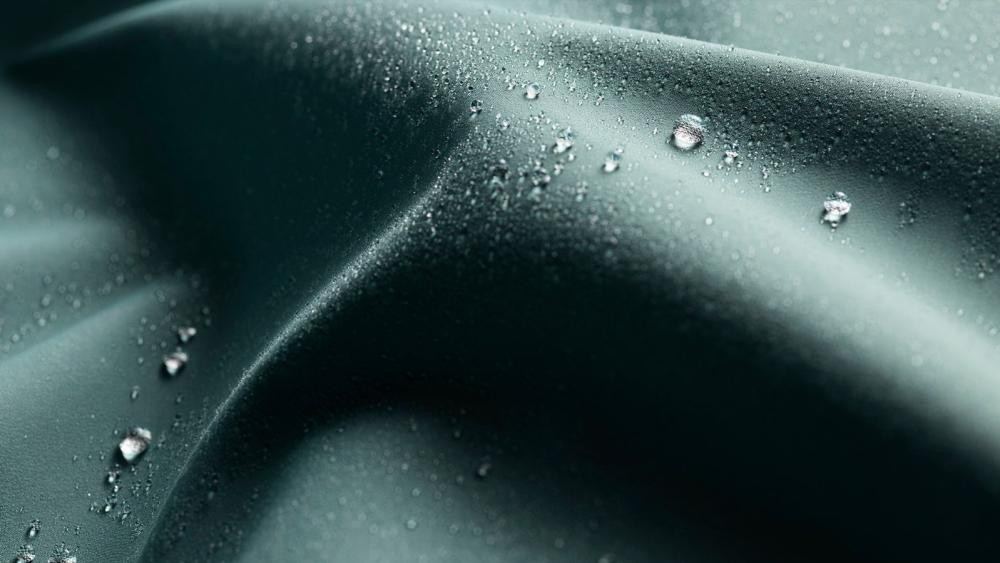With the rise of domestic outdoor sports, outdoor jackets have become one of the main equipment for many outdoor enthusiasts.But what you have bought is really a qualified "outdoor jacket"? For a qualified jacket, outdoor travelers have the most direct definition - a waterproof index greater than 5000 and a breathability index greater than 3000. This is the standard for a qualified jacket.
How do jackets become waterproof?
There are usually three ways to waterproof the jacket.
First: Make the fabric structure tighter so that it is watertight.
Second: Add a waterproof coating to the surface of the fabric. When rain falls on the surface of the clothes, it can form water droplets and roll down.
Third: Cover the inner layer of the fabric with a waterproof film to achieve a waterproof effect.
The first method is excellent in waterproofing but not breathable.
The second type will age with time and the number of washes.
The third type is the mainstream waterproof method and fabric structure currently on the market (as shown below).
The outermost layer has strong friction and tear resistance. Some clothing brands will coat the surface of the fabric with a waterproof coating, such as DWR (Durable water repellent). It is a polymer applied to the outermost fabric layer to reduce the surface tension of the fabric, allowing water droplets to fall naturally.
The second layer has a thin film (ePTFE or PU) in the fabric, which can prevent water droplets and cold wind from penetrating into the inner layer, while allowing the water vapor in the inner layer to be eliminated. It is this film combined with its protective fabric that becomes the fabric of the outdoor jacket.

Since the second layer of film is relatively fragile, it is necessary to add a protective layer to the inner layer (divided into full composite, semi-composite and lining protection methods), which is the third layer of fabric. Considering the structure and practical scenarios of the jacket, a single layer of microporous membrane is not enough. Therefore, 2 layers, 2.5 layers and 3 layers of waterproof and breathable materials are produced.
2-layer fabric: Mostly used in some non-professional styles, such as many "casual jackets". These jackets usually have a layer of mesh fabric or flocking layer on the inner surface to protect the waterproof layer.2.5-layer fabric: Use lighter materials or even high-tech coatings as the inner layer of waterproof fabric protection. The goal is to ensure sufficient waterproofing, high breathability, and lightweight, making it better suitable for high-temperature environments and outdoor aerobic exercise.
3-layer fabric: The use of 3-layer fabric can be seen in mid-to-high-end jackets from quasi-professional to professional. The most striking feature is that there is no fabric or flocking on the inner layer of the jacket, only a flat protective layer that fits tightly inside.
What are the quality requirements for jacket products?
1. Safety indicators: including formaldehyde content, pH value, odor, decomposable carcinogenic aromatic amine dyes, etc.
2. Basic performance requirements: including dimensional change rate when washed, dye fastness, splicing mutual dye fastness, pilling, tear strength, etc.
3. Functional requirements: including surface moisture resistance, hydrostatic pressure, moisture permeability and other indicators.
This standard also stipulates safety index requirements applicable to children's products: including safety requirements for drawstrings on children's tops, safety requirements for children's clothing ropes and drawstrings, residual metal pins, etc.
There are many styles of jacket products on the market. The following summarizes three common misunderstandings when choosing jackets to help everyone avoid "misunderstandings".
Misunderstanding 1: The warmer the jacket, the better
There are many types of outdoor clothing, such as ski clothing and jackets. In terms of warmth retention, ski jackets are indeed much warmer than jackets, but for normal weather conditions, buying a jacket that can be used for ordinary outdoor sports is enough.
According to the definition of the three-layer dressing method, a jacket belongs to the outer layer. Its main function is windproof, rainproof, and wear-resistant. It does not itself have warmth retention properties.
It is the middle layer that plays the role of warmth, and fleece and down jackets generally play the role of warmth.
Misunderstanding 2: The higher the waterproof index of a jacket, the better
Professional waterproof, this is a must-have function for a top-notch jacket. The waterproof index is often what people are most concerned about when choosing a jacket, but it does not mean that the higher the waterproof index, the better.
Because waterproofing and breathability are always contradictory, the better the waterproofness, the worse the breathability. Therefore, before buying a jacket, you must determine the environment and purpose of wearing it, and then choose between waterproof and breathable.
Misunderstanding 3: Jackets are used as casual clothing
As various jacket brands enter the market, the price of jackets has also dropped. Many jackets are designed by well-known fashion designers. They have a strong sense of fashion, dynamic colors and excellent thermal performance.
The performance of these jackets makes many people choose jackets as daily wear. In fact, jackets are not classified as casual clothing. They are mainly designed for outdoor sports and have strong functionality.
Of course, in your daily work, you can choose a relatively thin jacket as work clothes, which is also a very good choice.
Post time: Dec-19-2024





